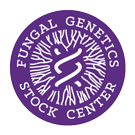Strain: Neurospora crassa
FGSC #7380
Reporting Genes: cum r(Sk-2)-1
Species: crassa
Allele: P5241 P527
Alternate Strain Number: 3257
Depositor: BCT
Linkage Group: III III
Mating Type: a
Opposite Mating Type: 7379
Genes

Reporting Genes: cum r(Sk-2)-1
Species: crassa
Allele: P5241 P527
Alternate Strain Number: 3257
Depositor: BCT
Linkage Group: III III
Mating Type: a
Opposite Mating Type: 7379
